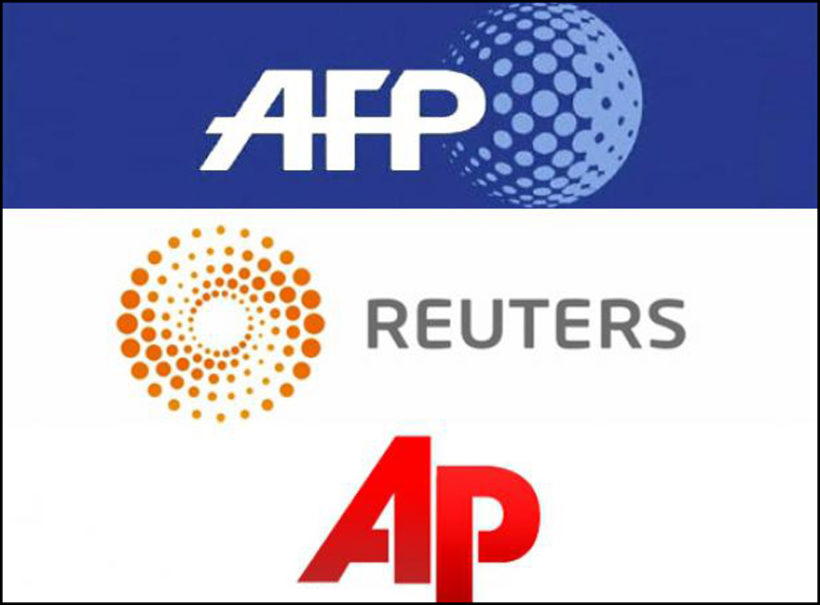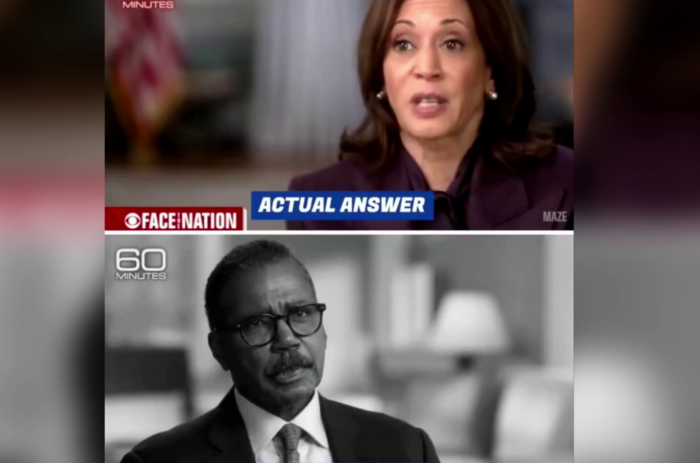
redo Jump to...
print Print...
Example of Media Bias:
So the United States has “the world’s highest rate of children in detention.” Is this worth reporting? Maybe, maybe not. Nevertheless, Agence France-Presse, or AFP, and Reuters did report it [in November 2019], attributing the information to a “United Nations study” on migrant children detained at the US-Mexico border.
Then the two agencies retracted the story. Deleted, withdrew, demolished. …Sheepishly, the two news organizations explained that, you see, the UN data was from 2015 — part of a border crackdown that had begun years earlier.
We all know who the president was in 2015. It wasn’t evil, child-caging monster President Trump. It was that nice, compassionate, child-caging monster President Barack Obama.
Zap. The story made Obama look bad. Hence the story was removed. Not updated or corrected, removed.
…Who can keep up? But try to remember this one, because it’s instructive. People think news organizations flat-out fabricate stories. That isn’t often the case. Fake news is a problem that pops up here and there, but the much more systematic and deeply entrenched attack on truth is the casual, everyday bias of reporters.
AFP and Reuters deleted a story that was, in a narrow sense, true — that a UN study claimed the United States had some 100,000 children in migrant-related detention. The United Nations is horribly biased against America and the West. Still, on the level of lazy, news-release-driven journalism, the locked-up-kids story was minimally valid.
At any rate, what the agencies didn’t seem to like was the story’s changed implication: That Obama, rather than Trump, locked up a lot of children. This is what’s important: Not that AFP and Reuters deleted a story, but that the implication of the story meant everything to them.
Every time you read something from AFP and Reuters (and CNN and the Washington Post), you should be thinking not “This is fake news” but: “What’s the agenda?” To paraphrase Democratic Senator Chuck Schumer’s infamous, and instructive, comment on the CIA, news outlets have six ways from Sunday of getting you to think what they want you to think, none of which involve making up stuff.
One is simply not reporting things. News that isn’t mentioned didn’t really happen to that outlet’s consumers. Obama’s approval ratings were mostly really low, comparable to Trump’s, typically in the low to mid-40s. Polls would come out saying this, and the media would simply not report it.
Trump doesn’t enjoy this courtesy. Nor can he be associated with good news. A recent Newsbusters survey found that, over a recent six-week period, not even 1 percent of network news reporting on the Trump administration even mentioned positive economic news.
Another trick is seriously reporting the policy proposals of Politician One but focusing entirely on the miscues and petty controversies of Politician Two. You might, if you are a news consumer, be under the impression that Democratic Sen. Elizabeth Warren has a serious well-reasoned set of plans. These plans are, however, so far-fetched as to be breathtaking. She has vowed $20.5 trillion in new federal spending, an increase of 40 percent on top of current levels. Yet Warren isn’t the presidential candidate the media regularly portray as unhinged.
Meanwhile, the gaffes of Democrats attract very little interest; network news basically ignored the mini-scandal involving Democratic presidential candidate Pete Buttigieg, who promoted a list of black supporters, many of whom either were not black or did not support him. The networks declined to cast Buttigieg as racially insensitive.
Still another trick is deciding that a matter that advances the wrong narrative is simply “local news,” hence not worthy of attention from the major outlets. Any crimes committed by illegal immigrants can be safely ignored by CNN, but any crimes associated with right-wingers become cause for national dismay and soul searching.
CNN did a massive story [in November written by] five reporters after someone at Syracuse University sent out a white supremacist manifesto to “several” cellphones and racist graffiti was discovered in a residence hall. Previously, similar outbreaks of campus fear turned out to be based on hoaxes. Yet if this story dissolves, CNN can accurately claim, hey, we were just reporting that students were scared.
The impression created by a thousand stories like this — that America in 2019 is a white supremacist nightmare — will linger all the same. Using, or ignoring, facts in accordance with whether they create the desired impression is the principal agenda of today’s media.
(from a November 20, 2019 commentary by Kyle Smith at NYPost.)
To accurately identify different types of bias, you should be aware of the issues of the day, and the liberal and conservative perspectives on each issue.
Types of Media Bias:Questions
1. What types of bias does Kyle Smith illustrate in his commentary?
2. Mr. Smith reports: “A recent Newsbusters survey found that, over a recent six-week period, not even 1 percent of network news reporting on the Trump administration even mentioned positive economic news.” Why do you think this is so, despite the fact that under President Trump, as Matthew Yglesias of Vox writes, “the economy is doing quite good…unemployment rate is 3.5 percent. The stock market is at an all-time high. The poverty rate is falling…the typical family’s income is higher today than it’s ever been”?
3. a) What do you think about each of the following assertions made by Mr. Smith? (agree or disagree? Explain your answers.)
b) Ask a parent the same question. Discuss your answers.
- “What the AFP and Reuters didn’t seem to like was the story’s changed implication: That Obama, rather than Trump, locked up a lot of children. This is what’s important: Not that AFP and Reuters deleted a story, but that the implication of the story meant everything to them.”
- “The media would simply not report [news unfavorable of Obama]. Trump doesn’t enjoy this courtesy. Nor can he be associated with good news.”
- “Using, or ignoring, facts in accordance with whether they create the desired impression is the principal agenda of today’s media.”
4. Obviously, Trump supporters don’t like most media coverage of President Trump. But why should voters who do not like President Trump want him to be treated fairly by the news media?
Scroll down to the bottom of the page for the answers.
Answers
1. Bias by story selection and omission.
2. Opinion question. Answers vary.
3. Opinion question. Answers vary.
4. Opinion question. Answers vary.



